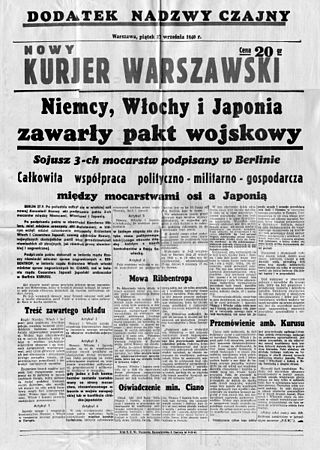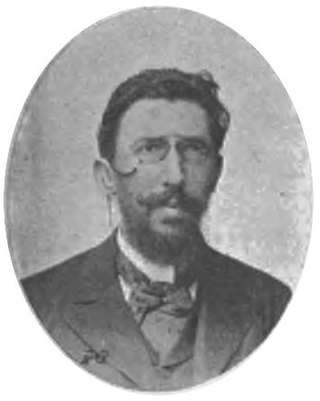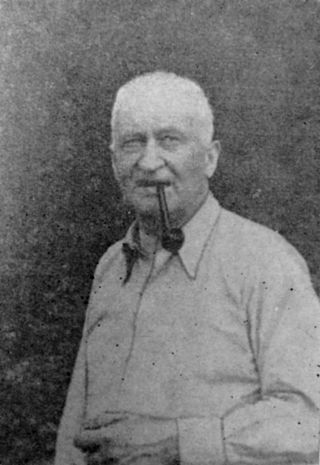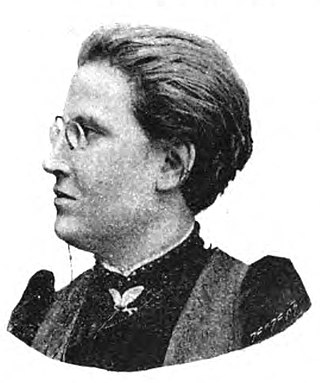
The Kurier Warszawski (or Warsaw Courier) was a daily newspaper printed in Warsaw, Poland from 1821 to 1939, with two editions daily from 1873. It was selling 4,000 copies in 1868, and over 20,000 copies after 1883. [1]

The Kurier Warszawski (or Warsaw Courier) was a daily newspaper printed in Warsaw, Poland from 1821 to 1939, with two editions daily from 1873. It was selling 4,000 copies in 1868, and over 20,000 copies after 1883. [1]

Lucyna von Bachman Ćwierczakiewiczowa was a Polish journalist and author of Polish cookery books.

The kotwica was an emblem of the Polish Underground State and Armia Krajowa used during World War II. It was created in 1942 by members of the Wawer minor sabotage unit within the AK, as an easily usable emblem for the struggle to regain the country's independence. The initial meaning of the initialism PW was "pomścimy Wawer", in reference to the 1939 Wawer massacre, which was considered to be one of the first large scale massacres of Polish civilians by German troops in occupied Poland.

Nowy Kurier Warszawski, initially Nowy Kurjer Warszawski was a German propaganda newspaper issued in the occupied Poland during World War II. Its name was coined after a popular pre-war newspaper Kurier Warszawski, with which it had nothing to do but the name. According to German sources the newspaper was issued in 200 000 copies daily, but it was commonly boycotted by the Poles and the numbers seem to be much overestimated.

Biuletyn Informacyjny was a Polish underground weekly published covertly in General Government territory of occupied Poland during World War II. The magazine was edited by Aleksander Kamiński and distributed as the main organ of ZWZ-AK headquarters in Warsaw, initially in order to inform the AK soldier about ongoing resistance activities. By 1944 Biuletyn Informacyjny had a circulation of 42,000-43,000 copies. The publishers recommended readers to have the articles reprinted in provincial underground publications throughout Poland.

"Mold of the Earth" is one of the shortest micro-stories by the Polish writer Bolesław Prus.

Kurier is a German-language daily newspaper based in Vienna, Austria.

Kazimierz Brodziński was an important Polish Romantic poet.

Edmund Bogdanowicz was a Polish poet, writer and journalist.

Antoni Edward Odyniec was a Polish Romantic-era poet who penned the celebrated "Song of the Filaretes".

Jan Kleczyński was a Polish writer, art critic, journalist and chess master.

Karl Ernst Wedel was a German confectioner of the Wedel family, who settled in Warsaw.

TVP3 Warszawa is one of the regional branches of the TVP, Poland's public television broadcaster. It serves the entire Masovian Voivodeship with particular dedication to the Warsaw metropolitan area. From 1992 till 2003 it was branded WOT, then till 2007 TVP3 Warszawa and since October 2007 it has been using its current name.

Jerzy Szaniawski was a Polish writer, playwright, and essayist; an elected member of the prestigious Polish Academy of Literature in the interwar period. He is best remembered for his series of short stories about the fictitious Professor Tutka, published in daily press in postwar Poland. During Stalinism his writing was temporarily banned as "ideologically adverse".
Dom Prasy was a Polish news corporation of the 1920s and 1930s, as well as a name of the eponymous building in Warsaw, where it had its headquarters. It published numerous daily newspapers and weekly journals. Taken over by the Germans during World War II, the company's assets became the cornerstone of the Nowy Kurier Warszawski propaganda newspaper. After the war the Dom Prasy's assets became the foundation of several modern newspapers, including Życie Warszawy.

Artur Franciszek Oppman was a Polish poet of the Young Poland period, who wrote under the pen name "Or-Ot".

Władysław Wankie was a Polish painter and art critic. He painted realist landscape paintings, genre scenes, religious art and symbolic art. He was the co-author of the Panorama of the Tatra Mountains.

Paulina Kuczalska-Reinschmit was a Polish social reformer and feminist activist, publisher and writer. She campaigned for women's right to vote in Poland, which was then partitioned between Russia, Germany and Austria-Hungary.

Izabela (Iza) Moszczeńska or Moszczeńska-Rzepecka was a Polish feminist journalist, translator and suffragette. She was the first Polish author to advocate sex education for both girls and boys.

Adam Franciszek Józef Siedlecki or Adam Grzymała-Siedlecki (AGS) (1876–1967) was a Polish literary and theater critic, playwright, translator, prose writer and director.